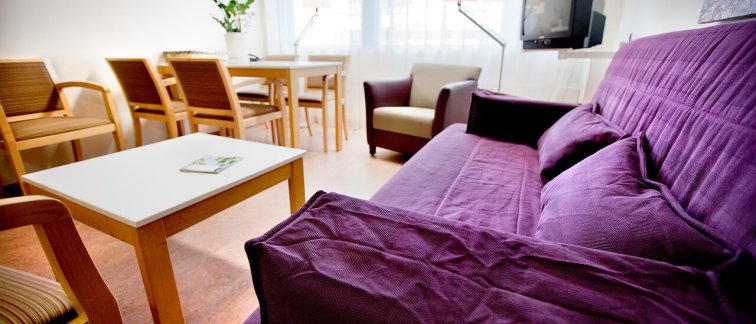In a flexible bronchoscopy, a lung specialist uses a bronchoscope to examine your airways and lungs. A bronchoscope consists of a thin, flexible tube with a lens and a suction channel. The device can be used to inspect your lungs. During a bronchoscopy, your airways can be rinsed and/or small sections of tissue can be removed. A bronchoscopy is a painless procedure and will take around 20 minutes in total.
Please notify your lung specialist if you:
- are allergic to any medication or anaesthetic;
- use any blood-thinning medication (ascal, plavix, persantin, acenocoumarol, marcoumar fraxiparine or fraxodi);
- are diabetic and inject insulin;
- are pregnant;
- are anxious about the test.
Preparation
To prevent you from choking, you are not allowed to eat anything for six hours prior to the test. You are allowed to drink small sips of water up to two hours before the test. If you take any medication in the morning, you should continue to do so, unless the lung specialist has told you otherwise.
The day of the test
On the day of the test, please make your way to the Lung Disease Treatment Room, via the main entrance to the hospital. Once there, please report to the reception desk. If you are visiting our department for the first time, we will need to register you, so please don't forget to bring an identity document and your insurance card. It is very important that you wear comfortable clothing for the test (please avoid tight clothing), and that you remove any nail varnish prior to the test.
If you are unable to make it to the appointment on time due to unforeseen circumstances, please contact us on +31 20 444 2884. We will do our best to move your appointment to a slot later the same day, but we cannot guarantee we will be able to do so.
The test
While you are on the examination table, a doctor or nurse will anaesthetise your nose and throat using a spray. If you wear dentures, we will ask you to remove these prior to applying the anaesthetic. The anaesthetic has a bitter taste and will cause a swollen, stiff feeling in your throat. This is just a feeling; it does not actually make your throat swell up. You may also feel that swallowing has become more difficult.
The test is performed through your nose or mouth. When the test is performed through your mouth, we will insert a mouthpiece to prevent you from biting down on the bronchoscope.
Once the anaesthetic has been administered, you will be placed in a semi or fully reclined position. The bronchoscope will be inserted into your airways through your nose or mouth. This may cause you to feel tight-chested for a moment, but you will be able to continue breathing. Some parts of the airways are difficult to anaesthetise in advance. These will be anaesthetised via the bronchoscope during the test. You will be able to breathe normally during the test, and extra oxygen will be administered through your nose if necessary.
After the test
Due to the anaesthetic, you are not allowed to eat or drink for at least one hour after the test. This is because there is a significant risk of choking during this period. After one hour, you should try drinking some water. If you are able to do so without coughing, you are allowed to resume eating and drinking.
A final consultation will take place after the test to make any further arrangements.
Important information
You may continue to feel an irritated sensation in your throat and struggle to swallow for a while. These feelings will slowly subside. If you have a fever and/or chills (temperature over
38°C), you can take paracetamol.
If your fever persists into the next day, you must contact your attending doctor.
You may cough up some blood. If the volume of blood you cough up is greater than the bottom of a mug, you must contact your attending doctor. Complications are rare (±1 percent). If you would like more information on the complications, please ask your attending doctor.
If a tissue sample has been taken during the test, your attending doctor will call you at home with the results after one week. If you have not received a phone call after a week has passed, feel free to contact your attending doctor.
Resuscitation policy
The Lung Disease Treatment Room is only used for tests/treatment, and the chance of complications is small. Nevertheless, we would like to point out that, in principle, all patients will be resuscitated in the event of complications, unless the patient has explicitly notified the doctor that he/she would prefer not to be resuscitated.For inpatients, we will respect the resuscitation policy agreed as part of their hospital treatment.
Questions
If you have any concerns or questions after the test, feel free to contact the Lung Disease clinic:
During office hours you can call telephone number (+31) 020 - 444 05 22, ask for the on-call lung specialist
Outside of office hours you can call Amsterdam UMC central number (+31) 020 - 444 44 44, ask for the on-call lung specialist

